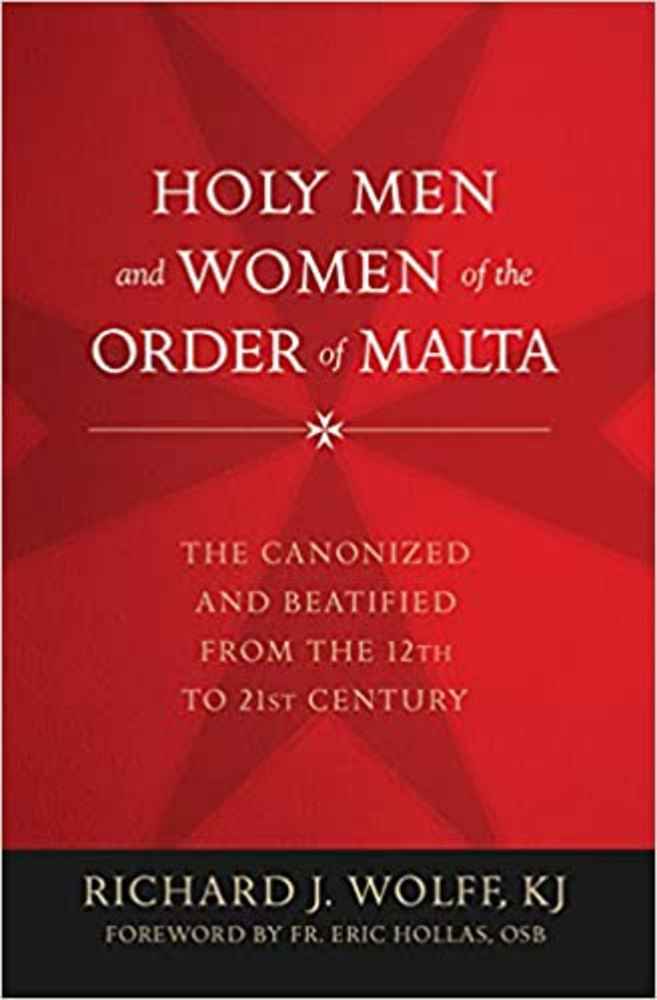A Second Look at the Saints of the Order

If you have ever looked at the lives of canonized and beatified women and men of early Catholicism or the Middle Ages, and specifically the Order of Malta, you may have wondered (as did this reviewer) just how credulous people really are. You might have wished that someone would take a hard look at these saints and blesseds, and pruned away the legends and hagiography. And now comes Frá Richard Wolff, a knight of justice in the American Association and no mean historian in his own right, to do exactly that in his splendid book, Holy Men and Women of the Order of Malta, with a fine foreword by the Rev. Eric Hollas, OSB.
He applies the methods of modern history to strip away many of the hagiographical details in the lives of those who are listed as saints or blesseds of the Order. In so doing, he recognizes that the perhaps well-meaning writers who surrounded these people with legends not only misrepresented the truth but they also made it impossible for the faithful to acknowledge the teaching of Vatican II: that all men and women are called to holiness.
After an opening survey of the field, Frá Richard devotes his first (and, to this reviewer, best) chapter to Blessed Frá Gerard. Putting aside the legend (approved, inexplicably, by one pope) that the hospital in Jerusalem was visited by Christ during his earthly life, and similar stories, we are left with the undoubted holiness and active service to the poor and sick, as well as the far-sightedness, of Frá Gerard.
The story continues with St. Ubaldesca, who was not known to care for the sick and the poor, and whose fasting was so extreme that modern scholars refer to her as the first of the “holy anorexics.” And yet she was a woman of notable holiness, apparently a lay penitent proclaimed by the citizenry (as was the custom of the time) to be a saint, and known for her begging for her monastery. Here was a woman who came from no high or wealthy family yet was crowned with canonization.
St. Hugo Canefri was another who went to the Holy Land, then returned as a knight and devoted the rest of his life to humble service not only to the poor and the sick but also the weary traveler. He lived a very simple and ascetic life, and his sainthood was felt by hundreds of people.
And so Frá Richard continues, covering some saints whose relationship to the Order was rather tangential and others much more closely aligned with it. Here, St. Toscana deserves particular attention, for she was a wealthy laywoman who attached herself to the community of the Order in Jerusalem, serving the poor and the sick every day, and exemplifying the ideal that Vatican II would hold up seven centuries later.
Blessed Adrian Fortescue, Venerable Thomas Dingley, and Blessed David Gonson, as Frá Richard notes, have a special place among the saints and blesseds of the Order of Malta, for they were martyred for standing up to Henry VIII. Their stories, told in some detail in this book, are a reminder that there is more than one way to sainthood.
Finally, the trio of Pope St. John XXIII, Pope St. Paul VI, and the Servant of God Andrew Bertie, end this book. The two popes were not active in the Order, though John XXIII rescued it from the would-be takeover by Cardinal Canali. But their evident sanctity justifies their inclusion. In particular, Pope Paul’s criticism of the persistent divide between the developed and undeveloped nations, and his urging of the “preferential respect for the poor” (also called the “preferential option for the poor”) in Catholic social teaching, are both attempts to put into action the love for the sick and poor that is the hallmark of the Order.
Frá Andrew was a kind and caring individual, devoted to the Order, which he served as Grand Master, and doer of innumerable works on behalf of the sick and needy, who inspired many who knew him.
In sum, Frá Richard has done a remarkable job of illustrating the comment that he quotes before his first chapter, from Blessed Miriam Teresa Demjanovich, SC, an American nun:
So many biographers seem so engrossed in impressing their readers with the authentic and genuinely supernatural sanctity of the saints, that the human element is so far omitted or obscured or distorted that mere man is apparently no longer human. While humanity admires, it is at the same time repelled.
Frá Richard rescues those whose stories he tells from that distortion. Every member of the Order owes him a debt of gratitude.
